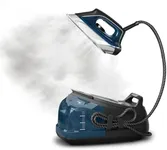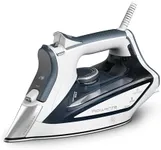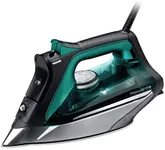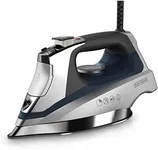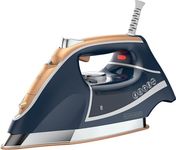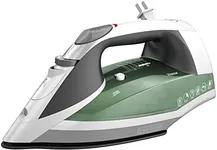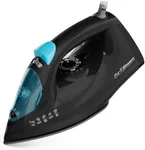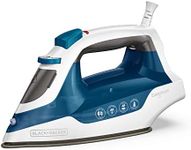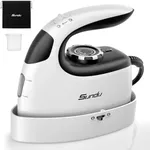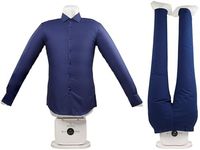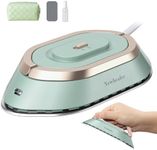Buying Guide for the Best Iron Box For Home
Choosing the right iron box for your home can make a significant difference in how efficiently and effectively you can keep your clothes wrinkle-free. When selecting an iron, it's important to consider several key specifications that will impact its performance and suitability for your needs. Understanding these specs will help you make an informed decision and ensure you get the best fit for your ironing requirements.WattageWattage refers to the power consumption of the iron. Higher wattage irons heat up faster and can maintain a consistent temperature, which makes ironing quicker and more efficient. Irons typically range from 1000 to 3000 watts. For light, occasional ironing, a lower wattage iron (1000-1500 watts) may suffice. For regular, heavy-duty ironing, consider an iron with higher wattage (2000-3000 watts) to ensure better performance.
Soleplate MaterialThe soleplate is the flat, heated surface that comes into contact with your clothes. Common materials include stainless steel, ceramic, and non-stick coatings. Stainless steel soleplates are durable and glide smoothly over fabrics. Ceramic soleplates distribute heat evenly and are less likely to stick to clothes. Non-stick soleplates are easy to clean and prevent fabric from sticking. Choose a soleplate material based on your preference for durability, ease of use, and maintenance.
Steam OutputSteam output is crucial for removing wrinkles effectively. Irons can have different steam settings, including continuous steam and steam burst. Continuous steam provides a steady flow of steam, while steam burst delivers a powerful shot of steam for stubborn wrinkles. Look for an iron with adjustable steam settings to cater to different fabric types. Higher steam output is beneficial for heavy fabrics like denim, while lower steam is suitable for delicate fabrics like silk.
Water Tank CapacityThe water tank capacity determines how long you can iron without needing to refill the tank. Larger tanks (300-400 ml) are ideal for extended ironing sessions, while smaller tanks (200-250 ml) are sufficient for shorter tasks. If you frequently iron large loads of laundry, a larger tank will save you time and effort. For occasional or light ironing, a smaller tank will be more manageable and less cumbersome.
Temperature ControlTemperature control allows you to adjust the heat settings based on the type of fabric you are ironing. Most irons have a dial or digital controls to select the appropriate temperature for different materials, such as cotton, wool, silk, or synthetic fabrics. Accurate temperature control is essential to prevent damage to delicate fabrics and ensure effective wrinkle removal. Choose an iron with easy-to-use and precise temperature settings to accommodate a variety of fabrics.
WeightThe weight of the iron can affect your comfort and ease of use. Heavier irons (1.5-2 kg) can press out wrinkles more effectively with less effort, but they may be tiring to use for extended periods. Lighter irons (1-1.5 kg) are easier to maneuver and less straining on your wrist, but may require more pressure to remove wrinkles. Consider your physical strength and the duration of your ironing sessions when choosing the weight of your iron.
Cord Length and SwivelThe cord length and swivel feature impact the iron's maneuverability and ease of use. A longer cord (2-3 meters) provides more flexibility and allows you to move freely while ironing. A swivel cord prevents tangling and makes it easier to iron in different directions. If you have a large ironing area or need to move around a lot, opt for an iron with a longer, swivel cord for added convenience.
Auto Shut-OffAuto shut-off is a safety feature that turns off the iron automatically if it is left unattended for a certain period or if it tips over. This feature helps prevent accidents and conserves energy. If you are prone to forgetting to turn off appliances or have a busy household, an iron with auto shut-off will provide peace of mind and enhance safety.
